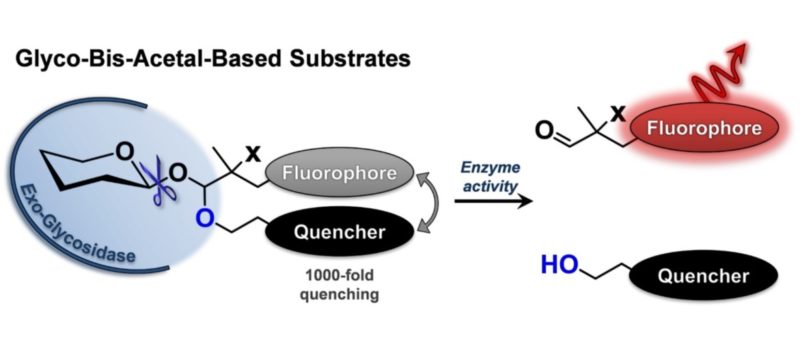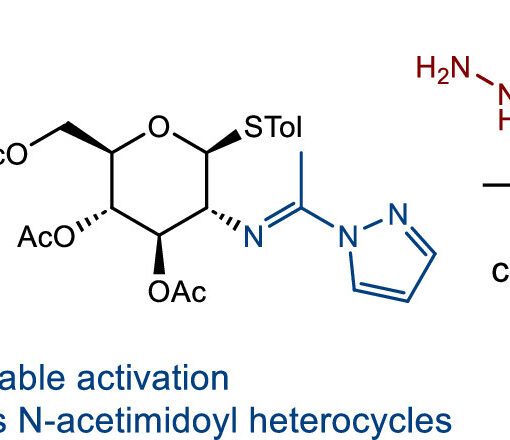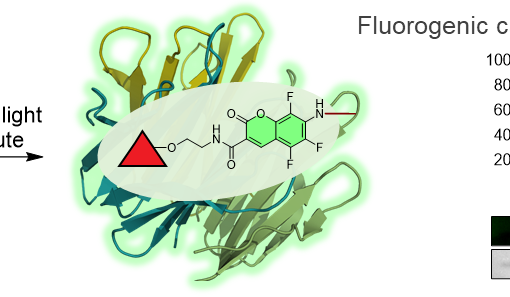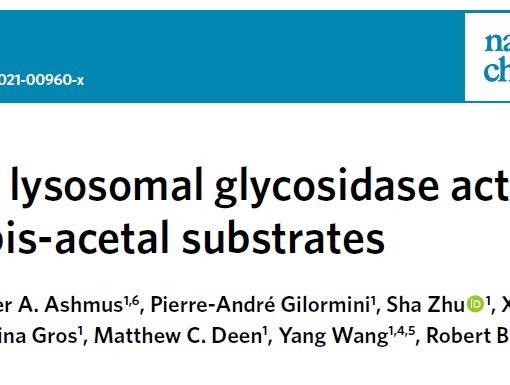Cecioni, S.; Vocadlo, D. J., Carbohydrate Bis-acetal-Based Substrates as Tunable Fluorescence-Quenched Probes for Monitoring exo-Glycosidase Activity. J. Am. Chem. Soc. 2017, 139 , 8392.
Tunable Förster resonance energy transfer (FRET)-quenched substrates are useful for monitoring the activity of various enzymes within their relevant physiological environments. Development of FRET-quenched substrates for exo-glycosidases, however, has been hindered by their constrained pocket-shaped active sites. Here we report the design of a new class of substrate that overcomes this problem. These Bis-Acetal-Based Substrates (BABS) bear a hemiacetal aglycon leaving group that tethers fluorochromes in close proximity, also positioning them distant from the active site pocket. Following cleavage of the glycosidic bond, the liberated hemiacetal spontaneously breaks down, leading to separation of the fluorophore and quencher. We detail the synthesis and characterization of GlcNAc-BABS, revealing a striking 99.9% quenching efficiency. These substrates are efficiently turned over by the human exo-glycosidase O-GlcNAcase (OGA). We find the hemiacetal leaving group rapidly breaks down, enabling quantitative monitoring of OGA activity. We expect this strategy to be broadly useful for the development of substrate probes for monitoring exo-glycosidases, as well as a range of other enzymes having constrained pocket-shaped active sites.




